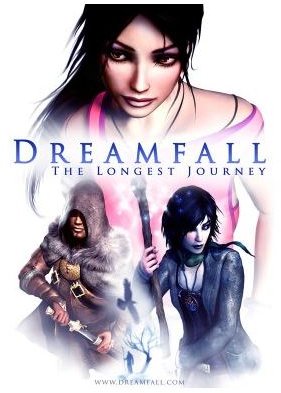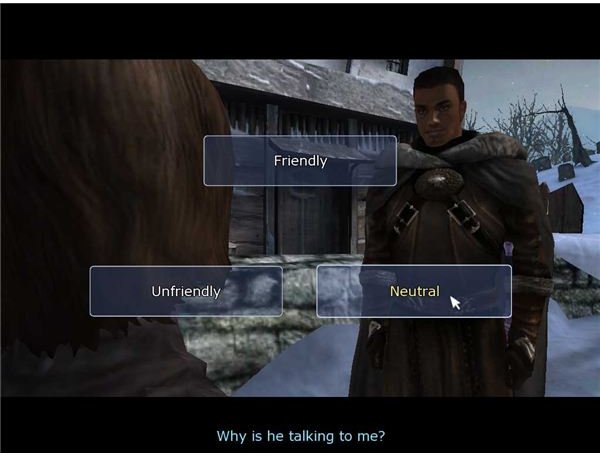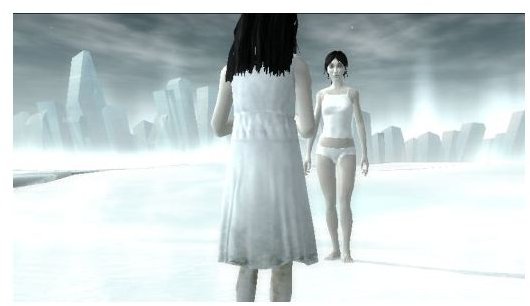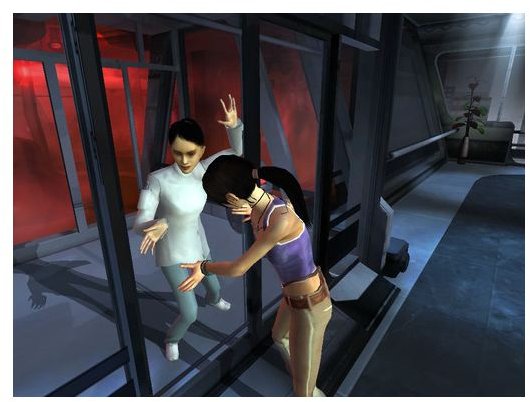Gaming Retrospective #003: Dreamfall: The Longest Journey

The Longest Gaming Retrospective
Gaming aficionado and erstwhile auteur Ragnar Tørnqvist may have taken seven years in fully realising the followup to 1999‘s heralded The Longest Journey (TLJ), but in that arduous intermittent period, he sculpted a new and sometimes brilliant imagining of one of the most esteemed adventure games of all time.
At a time when recession and remission had nearly destroyed the adventure game genre completely, The Longest Journey sparked interest in what Tørnqvist himself described as the “modern adventure” game. During the seven year gap between the TLJ games, the onset of an adventure revival was brushed aside just as it had been leading into the new millennium (Lucas Arts glory days now fading into obscurity), with TLJ not making much of an impact on the genre.
Dreamfall Review

However, Dreamfall recreated that same level of anticipation or at least acceptance in adventure gaming and it’s relevancy in modern spheres of development. With recent extensions and re-releases of Monkey Island, Sam & Max episodic content and even Nintendo DS games such as Hotel Dusk or Another Code, the adventure gaming market may have the potential to rise once again, although a prospective Dreamfall sequel is probably a long way off.
With such a wealth of lore and setting for its story elements, a deep translation and explanation would be hard to accomplish in this gaming retrospective itself. However, I will outline some of the exposition just to add context to the universe and game I am writing this retrospective on.
Pretextual Universe
Earth is divided into two parallel worlds, known as Stark and Arcadia, which are led by either technology and magic. In addition to these two worlds, there is a third plane of existence known as the Divide where the Guardian tries to keep the balance of the worlds intact.
The pretext of the previous game, TLJ, is that April Ryan has to save a kidnapped Guardian before the balance is destroyed and the worlds collapse, finding out she is in fact a daughter of the Draic (Dragon) Kin and has the ability to “shift” between the two worlds.
Now, in Dreamfall, the game shifts perspective between three lead characters, April Ryan again, Zoë Castillo and Kian Alvane. The former being a jaded resistance leader in the magic laden world of Arcadia having lost her ability to shift, while fighting against the imperalist invaders known as the Azadi Empire, of which Kian is an honoured soldier and would be assassin of April later in the game.
Shifting Perspectives in Dreamfall: The Longest Journey
Zoë becomes the principal character throughout much of the game with her sometimes stilted English accent while her retelling of the story becomes the framing technique for the entire game. Having discovered a plot by WATIcorp to brainwash the populace of Stark after they murdered her on-off journalist boyfriend Reza for being too close to the truth, she attempts to stop the release of the “dreamer”, which causes this mass brainwashing through the use of the drug Morpheus.

Even more harrowing for Zoë is the constant contact on video screens, in a manner befitting a movie like The Ring or as further extrapolation a Japanese Onryō spirit, with a girl named Faith, a lost experiment with this new hallucinogenic drug WATIcorp is trying to release to the masses.
Faith keeps telling Zoë to save April Ryan, which leads her into the world of Arcadia and to eventually meeting April. From there, she learns of the Draic Kin, their role in the divide and the balance and many other things as well as meeting Brian Westhouse, a key figure in the overarching plot from both games.
Hopefully I’ve divulged enough to at least provide an understanding about this, but unlike most game retrospectives or reviews of both the past and in the future, it is impossible to quantify Dreamfall in one or two paragraphs.
Continue to page 2 for further ruminating opinions on this underrated adventure malaise…
Dreamfall Game Retrospective
The narrative is distinguished and often superb, containing idealogy on political and religious metaphors with profundity. Furthermore, notable time is given to carve out solid character development and contextualize the three characters individual predicament’s.
This is done through the in game diary entries of the three characters, although Zoë’s is the main arc to follow and gives further insight into her character, often offsetting the supernatural story elements with some relatable thoughts from the protagonist.
It can be argued that the previous game does a better job at fleshing out the proprietary character April, through these diary entries, but it does a good enough one even if some of the entries or lines written come off as flagrant or unnecessary in comparison to The Longest Journey.
Novel Narrative

It is a welcome sight when a game series can have such a rich and abundant universe or core storyline to delve into and still be exciting, somewhat original and genuine. The TLJ series certainly accomplishes this with it’s expanse of settings, illuminating characters (Roper Klacks being one of my personal favourites) and marriage of differing perspectives.
Much like Fahrenheit/Indigo Prophecy, the ability to track yourself down or chase yourself is a novel experience and when two characters you’ve been controlling finally meet, it should give the player a sense of occasion and even accomplishment.
Dreamfall Gameplay
Shameful it is that only a few games can really circumvent gameplay issues with their lore or story depth, Elder Scrolls shortcomings vanish when immersing yourself into the history and universe, unfortunately Dreamfall still has some obvious gaming failures that take you out of the experience a little bit.
For instance the combat is, to speak an over used phrase, clunky most of the time with no real benefit coming from the 3 to 4 battles you come across throughout the game. Generally what makes adventure games so great is the necessity to exclude combat based off the mechanics (point and click mainly) and how they fit with a combat system, i.e., not very well!
This opens the door to creating puzzles to go around enemies, use of dialogue options or other methods of non-violence which makes for a richer experience in a lot of older adventure type games.
Dreamfall still keeps this principal intact for the most part and it should be heralded because of this, not forcing the player to shoot or stab someone constantly can be a great thing, even if this motif is spoiled several times throughout.
Confused Epitaph
It could certainly be argued however that it’s necessary given the storyline and Kian/April’s vested interests as military leader’s etc, that they should engage in combat in some parts of the game, which is a fair enough point.

While the combat can be forgiven due to the scarcity, the condescension and poorly written ending is something I have a personal gripe with. It isn’t superlative, in a writing sense, to have an abrupt cliffhanger followed by a condescending narrative monologue addressing the player and telling them it’s their fight now and they need to do what they have to etc etc.
Eventually it just sounds like poorly scripted preaching (leading to a dolomite series of scenes at the end) and it is mainly thanks to Zoë’s voice actor that it becomes increasingly horrible to listen to. It’s sort of the reason why Requim for A Dream lost me completely in the last 10 or so minutes, with it’s badgering of the viewer not to take drugs, kind of obvious without spelling it out to the attentive viewer while adding a portmanteau of quick cuts to blur the culminating action, much like Dreamfall.
Ragnar Tornqvist, Gaming Auteur
With that said, Dreamfall is still a remarkable achievement in adventure gaming. Coming out in 2006, and seven years after it’s predecessor, it served a new generation of third-person adventure fans and while not the big seller, provides a great cult following that anticipate Tørnqvist’s next move.
While the ending scenes may lack bluster for me, the overall picture is well set up and the negative or defeatist nature of the ending, serves as a good propellent for the carry on game in the series. One of the main characters is dead, the other in a coma and the other may be found a traitor, while the bad guys at WATI released their evil dreamer machine that can enslave masses with a hallucinogenic, all is not well in Stark and Arcadia and the third game will hopefully tell us what happens.
Games like Dreamfall have a place in gaming’s veritable annals, by creating experiences that don’t necessarily require emergent or intelligent gameplay as much as stoic puzzles and a superbly fleshed out universe and inhabitants. When immersion can be truly realised because of this, the sometimes uninspired gameplay can be forgiven, because the immersion keeps you from realising the shortcomings. I’ll stop there, I could speak many more words on this, but I’ll save it for another couple of games this month…
